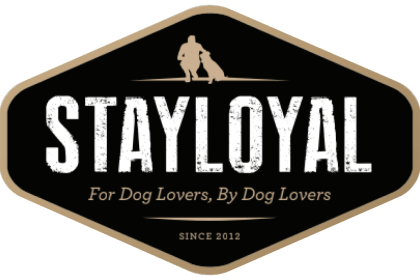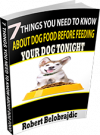New Research into Canine Bloat

The word bloat strikes fear into the heart of any large dog owner. It strikes quickly and kills within hours. By the time the owner notices the signs, they may have even less time to get to the emergency vet and save the dog’s life. And while it does strike mostly large-bodied deep-chested dogs, any dog can be affected.
Bloat occurs when the stomach, which contains gas-producing bacteria, becomes distended with gas that can’t escape. A second phase, gastric dilatation-volvulus (GDV), occurs when the stomach then rotates in a clockwise direction, cutting off any escape routes for the gas through either the esophagus or duodenum as they are twisted and kinked. The twisting also impairs blood flow to the stomach.
As the gas builds up the dog becomes increasingly uncomfortable, stands with a hunched back, paces, pants and retches unsuccessfully. If you have never seen bloat, please watch these videos so you can recognize it:
Make sure all your family members and any pet sitters also know the signs of bloat and what to do. Bloat is not a “wait and see” situation. It is a “call the vet we’re coming right now!” situation. You do not wait to see it if will get better, you do not wait for your spouse to come home from work, you do not wait for your regular vet to open. You call first so they can be ready, and you go. If you catch the very first signs, you will probably have just over an hour safety net. Most people don’t catch it that early though, so you may just have far less time.
As bloat progresses, the abdomen becomes distended, the gums pale, the pulse weak and rapid. Stomach tissue begins to die from lack of blood. As the vena cava, the main vein leading from the dog’s rear back to its heart, becomes obstructed the dog goes into shock.
Initial treatment is aimed at preventing shock by immediately starting intravenous fluids and relieving the pressure in the stomach either by inserting a trochar (basically a very large bore needle) into the stomach from the dog’s side, or by passing a tube from the mouth to the stomach. The dog is then taken to surgery where the stomach is untwisted and examined for dead tissue, which must be removed. The spleen is also examined for blood clots, which signal the need for its removal.
Overall mortality from GDV is between 10 and 40 percent. The worse a dog is upon its arrival at the veterinary clinic, the worse its chance of survival. About 80 to 85 percent of promptly treated dogs survive. A depressed dog has a three times increased risk of death, whereas a comatose one has a 36 times increased risk. Increased levels of plasma lactate are associated with necrosis, and so can be associated with higher mortality rate. Dogs requiring a splenectomy or removal of stomach tissue during surgery have 32 percent higher mortality; those requiring both have a 55 percent higher mortality. As one clinician observed, however, the one overwhelming factor, with zero survival, is euthanasia. Unless the condition is advanced, or finances already overstretched, you should probably elect to try to save the dog.
Stomach tacking (gastroplexy), in which the stomach is tacked to the surrounding abdominal wall to prevent future twists, has proven to be the single most effective prevention for GDV. It is usually done during GDV surgery, but can also be done as an elective surgery to prevent GDV. If it’s performed during GDV surgery, there’s about a 10% chance of subsequent dilation without rotation, and a 2% chance of dilation with rotation. Without gastropexy, there’s a about a 75% to 80% chance of recurrence of dilation with rotation.
Researchers have searched for decades for the causes of GDV. It occurs more often in large-bodied deep-chested dogs. Great Danes are at the highest risk of GDV of any breed. Many owners suspect gulping air when eating is to blame, but analysis of gas in the stomach indicates it’s not atmospheric gas. If the gas is placed in a plastic bag it will continue to expand until the bag bursts. Other factors such as eating kibble that expands in the stomach, exercising before or after eating, or eating from a bowl on the floor were once widely suspected as causing bloat but studies have shown otherwise. Dogs described by their owners as nervous or unhappy, or which had a close relative with GDV, or dogs that had inflammatory bowel disease (IBD) tend to be at higher risk.
Current research studies are looking at the role of both genetics and IBD in susceptibility to bloat. Many dogs with bloat have IBD, and since IBD can often be traced to an abnormal gut microbiome, researchers are examining whether an imbalanced population of gut bacteria might be the cause of IBD. In addition, they are looking at whether genes responsible regulating the gut microbiome might differ in dogs more prone to GDV. In fact, three genes have been associated with an increased chance of bloating in Great Danes. A DNA test for the risk alleles is now offered by VetGen (https://www.vetgen.com/ ).
But that’s not the whole story. Bacteria in the dog’s gut may also be associated with GDV. Bacteria is in turn affected by genetics and diet. Dogs with GDV were found to have a significantly lower intake of dietary fiber than non-GDV control dogs, leading researchers to suggest that a diet containing more complex fiber may provide some preventive measures against GDV.
These are still preliminary findings, with much more research needed. But the answer to preventing bloat is far more complex than simply raising a food bowl or restricting exercise after eating.








